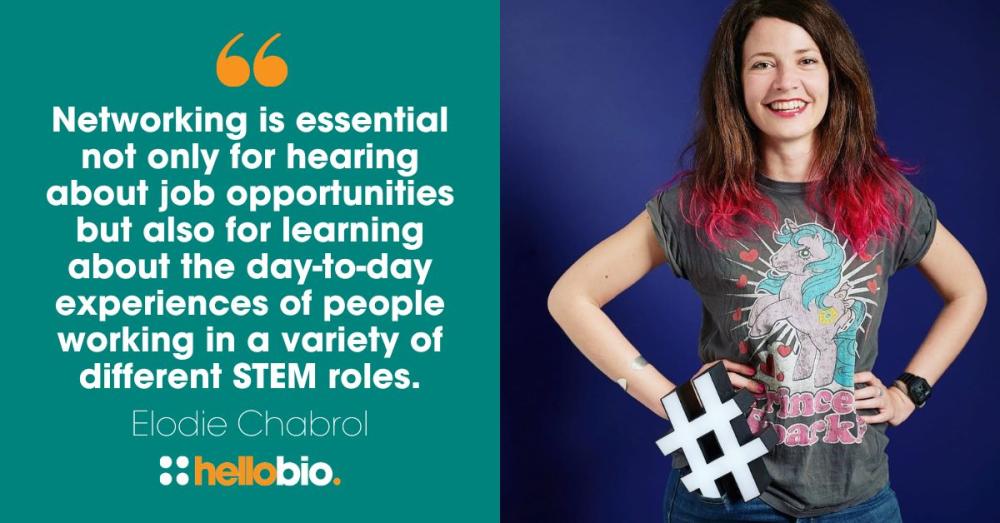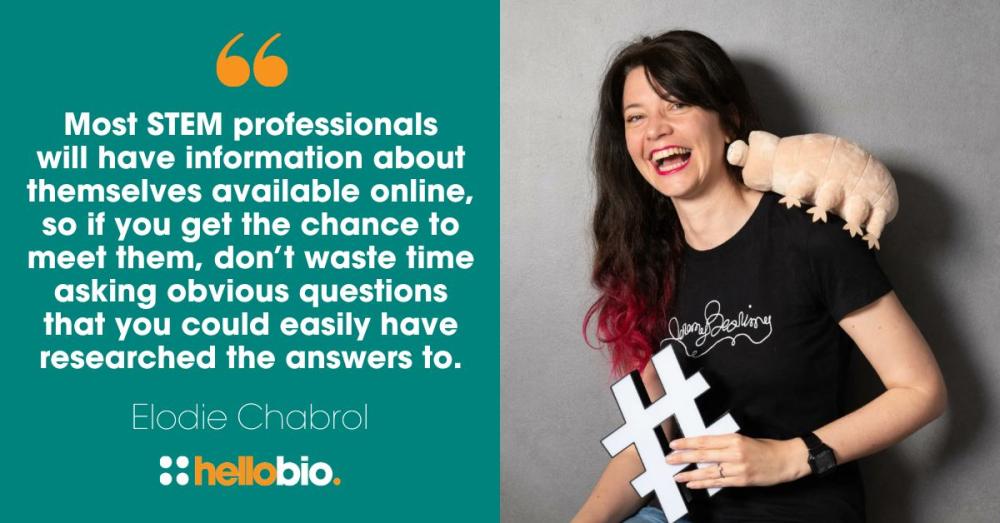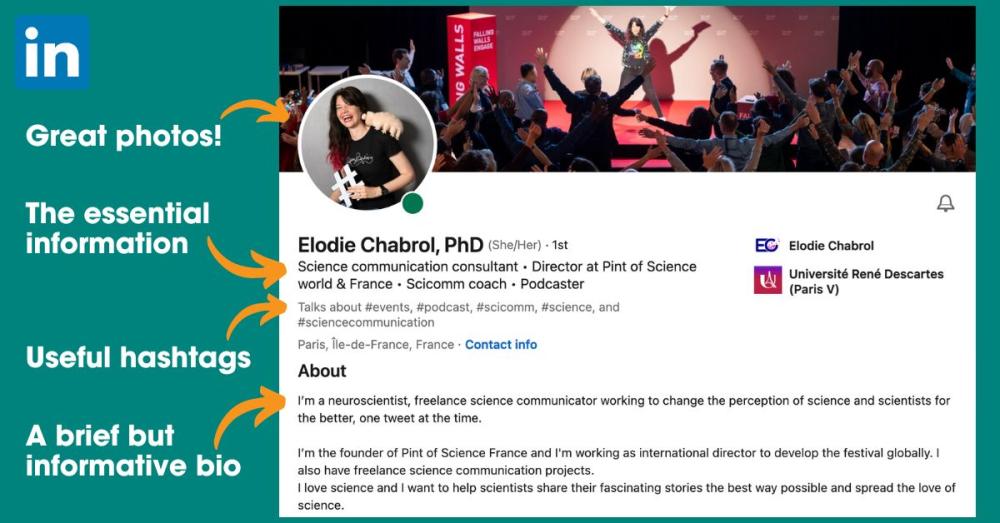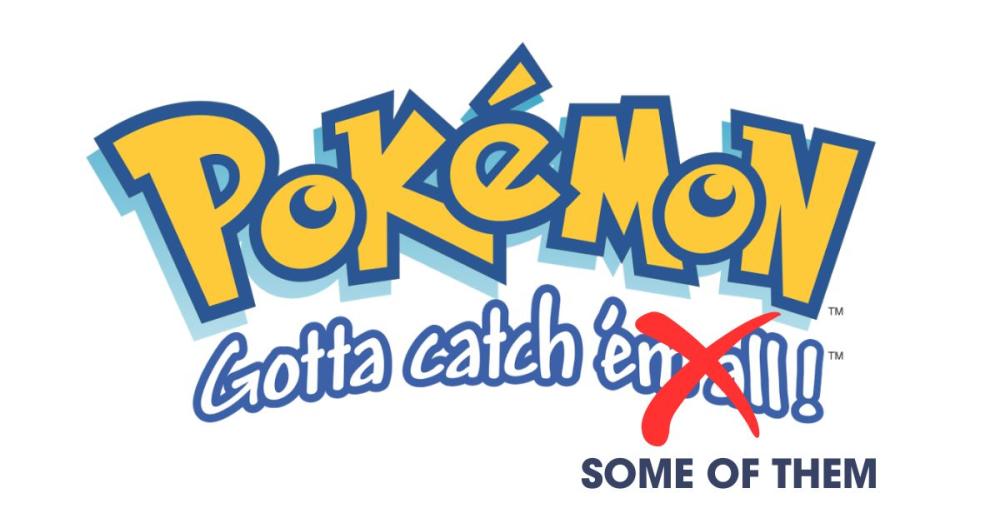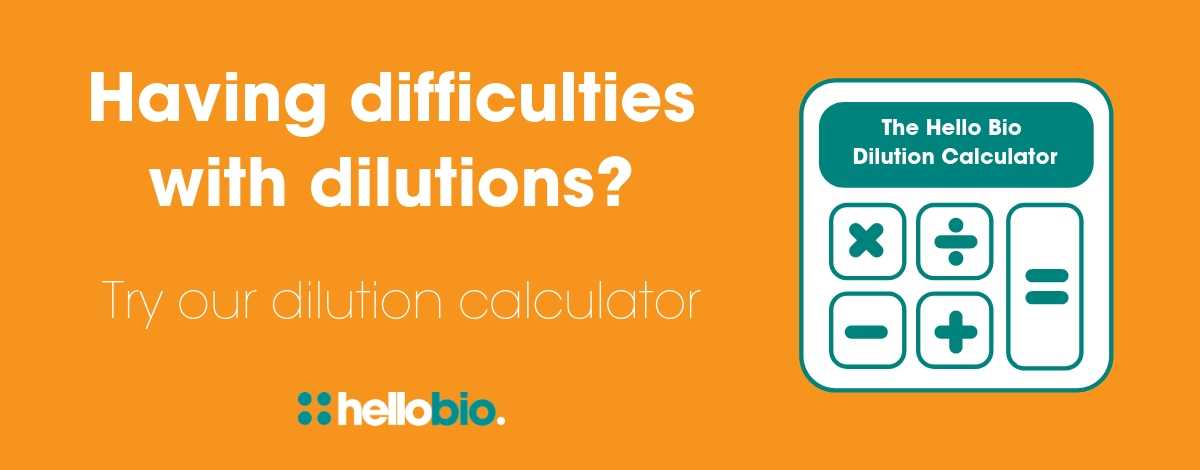Mastering Networking for Science: How To Boost Your Profile
As a busy life scientist with little time to spare, it’s easy to forget about the importance of regular networking and building a strong online profile. The value of effective networking cannot be overstated as it might just lead to a career-defining collaboration, or help you to secure your dream job role further down the line.
Whether you’re at an in-person science meeting or in the virtual world of online forums, being able to network with confidence is an essential skill for all researchers to learn, and having a strong profile is something you should prioritise in order to make the most of every networking opportunity.
In this article, I will aim to give you some practical tips to help you master the art of networking, and hopefully make it an effortless and painless activity that you can start doing today!
Why is networking important?
Those of us that work in busy science labs are already surrounded by scientists, collaborators and STEM professionals every day, so it’s easy to ask - why do I need to do more networking? You might already have colleagues, mentors, PIs and peers that you know you can reach out to for help or advice when you need it, but they’re often all working within the same professional ‘bubble’. You might only be hearing about grants, workshops, collaborations or publishing opportunities that are within that same bubble, so it’s important to reach out a little further sometimes to see what’s going on in the wider STEM community.
Building a network outside of your lab is essential for career development, and this doesn’t have to be a physical community of people who meet regularly in person, it can include online communities too. Many scientists use social networking platforms such as X (Twitter) or LinkedIn to find opportunities that they wouldn’t otherwise have come across within their existing circles.
Networking is also important for communicating about your own research because the larger your professional network, the further your message will reach when you have something you want to present to the world. When it comes to seeking a new job role, the more contacts you have, the more opportunities will open themselves up to you. Networking is essential not only for hearing about job opportunities but also for learning about the day-to-day experiences of people working in a variety of different STEM roles.
The rules of networking
There’s plenty of guidance out there when it comes to networking, but I have three very important rules that I always stick to when sharing networking advice…
Don’t leave it too late
Many people make the mistake of waiting until they need something to actually start networking. For example, they might decide to look for a new job, so they begin contacting people at random without any previous communication. This is the wrong approach because you need to have already built a network of contacts who know and understand you in order to start reaching out effectively. It’s important to build networking into your regular work routine so that it becomes something you do consistently, whether it be in-person or online. This will mean you’ll have a strong professional network already in place when the time comes that you need to reach out.
Be prepared
Preparation is key for effective networking. Knowing what you want to say about yourself and what information you want to gain from a networking opportunity is absolutely vital. Are you looking for a job opportunity? A collaboration? Are you seeking technical help? Do you just admire a particular person and would be excited to have them in your network? No matter what you’re looking to gain from a new connection, it’s important to gather as much information on them as you can beforehand. You don’t need to ‘stalk’ people before you meet them, but being armed with information will give you the best chance of connecting successfully.
Most STEM professionals will have a great deal of information about themselves freely available online, so if you have the chance to meet them, don’t waste time asking obvious questions that you could easily have researched the answers to. You will make a much better impression if you can show that you have done some preparation and that you want to talk to them about more than just what’s in their ‘About’ section on LinkedIn. Doing this preparation work in advance is a great way to boost your networking confidence, especially if you find social situations uncomfortable. It will help you to feel more in control of the situation, and will ensure you’re less likely to have a bad experience which might put you off networking in the future.
It’s a two-way thing
Remember that networking can bring a great number of opportunities your way, but it’s also rewarding to be the one to put other people in contact. For example, you might hear about an opportunity that is not necessarily within your field of expertise, but you know just the person for the job! By connecting other people, you will help to strengthen your professional network, and it’s a nice way to give something back. People will appreciate your efforts and this can also be a great boost to your professional reputation.
Online vs in-person networking
It’s easy to think of online and in-person networking as very different things. One takes place in a digital space and requires written communication skills, while the other brings you face-to-face with people and requires confident conversational skills. But actually, the two formats are not that different, and the most effective networking uses a mix of both.
For example, if you’re planning to attend an in-person meeting, you can start networking online in advance by asking your social networks “hey, who else is going to that meeting?” Often the meeting will have its own hashtag which is a great way of finding out who else is already discussing the event online. By finding out in advance who will be attending, you can start to make contact with people and arrange meet-ups at the event, even if it’s just a very informal chat over coffee. This is a simple but effective way to reach out to potential contacts who might not have already been on your radar.
This can also work in reverse, for example, you are introduced to somebody at an in-person event but only have a very short amount of time to chat. By connecting online a day or two later, you can strengthen that initial connection and have more meaningful communications further down the line. Even just following someone on X (Twitter) after you’ve met them is an informal but effective way to maintain a connection. Don’t hesitate to add new contacts on LinkedIn for example, and follow up with a short message saying how nice it was to meet them. It will make you stand out from the 100+ people they might have met that day!
Building an online profile
Potentially great connections can be lost if you don’t have a strong online profile to point people to. When you meet someone new, either in-person or online, directing them to your online profile is a pretty standard way of strengthening and reinforcing the value of your connection. Without an up-to-date profile, people may be reluctant to follow you because it might give the impression that you don’t use social media often, or that you are not even who you said you were!
Most scientists use LinkedIn and X (Twitter), and a professional-looking account with an up-to-date bio is the first place to start. You don’t need to write pages and pages about yourself, but a brief bio outlining what you do, your professional interests, areas of expertise, etc. is valuable and will give readers a good insight into who you are, and whether you might be a useful contact for them. A good quality photograph of yourself is also very helpful, as this will reassure those you might have met face-to-face that they’ve connected with the right person! Consider adding keywords relating to your research, as well as links to any websites you might have, including your lab website
Practical tips for networking success
In-person networking
- Prepare a short pitch - present yourself with confidence by preparing and practising a short pitch about you and your research. It’s a great way to break the ice while getting your message across, and it can give the person a good insight into what you do without overloading them with too much information. Give them enough to spark some curiosity and potentially leave them with follow-up questions.
- Step out of your comfort zone - the idea of self-marketing doesn’t sit comfortably with everyone, but pushing yourself beyond your comfort zone will almost always bring positive results. It’s easy to attend an in-person event and spend the day socialising with people you already know, but this is missing the point!
- Set yourself a challenge - set realistic networking goals for yourself, even if it’s just introducing yourself to one new person per day at a conference. You’ll find your confidence will begin to grow straight away!
- Make a statement - wear a colourful item of clothing or jewellery as a way to catch people’s attention and start a conversation! Wearing something unusual is not only a nice reason for people to approach you, it’s a great icebreaker, it expresses a little of your unique personality, and it will ensure people don’t forget you!
Online networking
- Keep your bio updated - make sure any online bios are accurate and kept up-to-date. It will look unprofessional if you don’t have your current details available for people to find, and this especially includes contact information such as telephone numbers or email addresses.
- Include a friendly note when making contact - when messaging someone online or requesting a connection, it’s polite to add a brief note to state either a) how you already know each other (if you have met before) or b) why you want to connect with them. You will have a much better chance of success with a friendly note than if you try to make cold contact.
- Don’t try to ‘catch them all’ - don’t be afraid to start adding contacts online but aim to connect with the right people, don’t just add every profile you see! Take the time to understand which connections would be most relevant to you, and do your research on those people rather than collecting people at random - they are not Pokemon!
Start networking… right now!
Here’s an easy practical exercise to start your networking journey… and I challenge you to do it right now!
- Follow me on Twitter (@EloScicomm) and send me a direct message to say that you have accepted my networking challenge from the Hello Bio blog!
- Find me on LinkedIn (Elodie Chabrol, PhD) and request to connect with me - and don’t forget to include the friendly note saying how you found me!
- Follow Hello Bio on Twitter (@hello_bio) and connect with team members Sam Roome and Hannah Brackenbury on LinkedIn - they will be pleased to hear from you!
Watch Elodie's talk at the Hello Bio LabLife Conference 2024
This article is based on Elodie's talk on 'Mastering Networking for Science: How To Boost Your Profile' at the Hello Bio LabLife Conference on 18th January 2024. You can watch the full video plus an audience Q&A session with Elodie on the Hello Bio YouTube channel:
About the author
Elodie Chabrol obtained a PhD in Neurogenetics in Paris and while pursuing research as a postdoc at UCL, London she got involved in the creation of the Pint of Science festival in 2013. She created the French branch in 2014 and after 4 years of postdoc and Pint of Science simultaneously, she decided to leave research to become a science communicator.
She is the international director for Pint of Science, but is also involved in various science communication projects as a freelancer and is passionate about helping scientists to share their love of science with the public.
Read more articles by Elodie Chabrol on the Hello Bio blog:
- Interviews with Scientists: Elodie Chabrol
- Listen & Learn: How to Start Your Own Science Podcast
- 10 Twitter Tips for Life Scientists
Connect with Elodie:
- Website: https://www.elodiechabrol.com/
- Twitter: @EloScicomm
- Instagram: @eloscicomm
- LinkedIn: Elodie Chabrol, PhD
________________________________
If you enjoyed this article, why not check out the other resources available on our blog. We are passionate about supporting life scientists including early career life scientists and PhD students - with really low-priced reagents, antibodies and biochemicals, early career scientist grants, and resources to help with both personal and professional development. We know how tough it is - so we hope you find these helpful!
More General Support for Life Scientists
For advice on wellbeing, dissertations, presenting at conferences, wellbeing, PhD support, networking and lots more, we have a huge range of articles to help - just click below:
Save up to 50% on our high purity reagents...
When you get to the stage of planning your experiments, don't forget that we offer a range of low-cost, high-purity agonists, antagonists, inhibitors, activators, antibodies and fluorescent tools (yes - they really are around half the price of other suppliers!) You can use our Quick Multi-Search Tool to search for lots of products in one go, and the range includes:
- Enzyme inhibitors and activators
- Chemogenetic ligands
- Ion channel modulators
- GPCR & ionotropic receptor ligands
- Cell biology reagents & biochemicals
Technical resources
Try our Molarity Calculator: a quick and easy way to calculate the mass, volume or concentration required for making a solution.
Try our Dilution Calculator: an easy way to work out how to dilute stock solutions of known concentrations
We also offer a comprehensive range of technical resources including antibody protocols and methods, product guides and mini-reviews:
And finally, don't forget to check back in with our blog regularly for our latest articles. If there’s something you’d love to contribute to the community, whether that’s an interview or article, drop us a line at hello@hellobio.com
---






